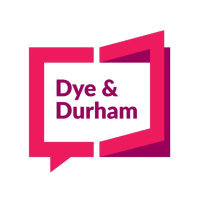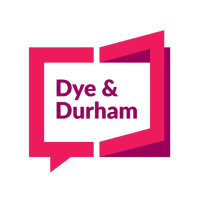
Dye & Durham Ltd
TSX:DND


| US |

|
Johnson & Johnson
NYSE:JNJ
|
Pharmaceuticals
|
| US |

|
Berkshire Hathaway Inc
NYSE:BRK.A
|
Financial Services
|
| US |

|
Bank of America Corp
NYSE:BAC
|
Banking
|
| US |

|
Mastercard Inc
NYSE:MA
|
Technology
|
| US |

|
UnitedHealth Group Inc
NYSE:UNH
|
Health Care
|
| US |

|
Exxon Mobil Corp
NYSE:XOM
|
Energy
|
| US |

|
Pfizer Inc
NYSE:PFE
|
Pharmaceuticals
|
| US |

|
Palantir Technologies Inc
NYSE:PLTR
|
Technology
|
| US |

|
Nike Inc
NYSE:NKE
|
Textiles, Apparel & Luxury Goods
|
| US |

|
Visa Inc
NYSE:V
|
Technology
|
| CN |

|
Alibaba Group Holding Ltd
NYSE:BABA
|
Retail
|
| US |

|
JPMorgan Chase & Co
NYSE:JPM
|
Banking
|
| US |

|
Coca-Cola Co
NYSE:KO
|
Beverages
|
| US |

|
Walmart Inc
NYSE:WMT
|
Retail
|
| US |

|
Verizon Communications Inc
NYSE:VZ
|
Telecommunication
|
| US |

|
Chevron Corp
NYSE:CVX
|
Energy
|
Utilize notes to systematically review your investment decisions. By reflecting on past outcomes, you can discern effective strategies and identify those that underperformed. This continuous feedback loop enables you to adapt and refine your approach, optimizing for future success.
Each note serves as a learning point, offering insights into your decision-making processes. Over time, you'll accumulate a personalized database of knowledge, enhancing your ability to make informed decisions quickly and effectively.
With a comprehensive record of your investment history at your fingertips, you can compare current opportunities against past experiences. This not only bolsters your confidence but also ensures that each decision is grounded in a well-documented rationale.
Do you really want to delete this note?
This action cannot be undone.

| 52 Week Range |
2.71
21.43
|
| Price Target |
|
We'll email you a reminder when the closing price reaches CAD.
Choose the stock you wish to monitor with a price alert.

|
Johnson & Johnson
NYSE:JNJ
|
US |

|
Berkshire Hathaway Inc
NYSE:BRK.A
|
US |

|
Bank of America Corp
NYSE:BAC
|
US |

|
Mastercard Inc
NYSE:MA
|
US |

|
UnitedHealth Group Inc
NYSE:UNH
|
US |

|
Exxon Mobil Corp
NYSE:XOM
|
US |

|
Pfizer Inc
NYSE:PFE
|
US |

|
Palantir Technologies Inc
NYSE:PLTR
|
US |

|
Nike Inc
NYSE:NKE
|
US |

|
Visa Inc
NYSE:V
|
US |

|
Alibaba Group Holding Ltd
NYSE:BABA
|
CN |

|
JPMorgan Chase & Co
NYSE:JPM
|
US |

|
Coca-Cola Co
NYSE:KO
|
US |

|
Walmart Inc
NYSE:WMT
|
US |

|
Verizon Communications Inc
NYSE:VZ
|
US |

|
Chevron Corp
NYSE:CVX
|
US |
This alert will be permanently deleted.
Dye & Durham Ltd
Dye & Durham Ltd. engages in the development of software solutions for business law and real estate conveyancing. The company is headquartered in Toronto, Ontario and currently employs 1,501 full-time employees. The company went IPO on 2020-07-17. The firm provides critical workflow software and information services, which clients use to manage their process information and regulatory requirements. Its legal software automates workflow and streamlines access to public records to support end-to-end legal transactions-solutions range from due diligence searches on an acquisition or financing to corporate registrations and the automation of all documents required to complete a real estate purchase, sale and mortgage. The company provides government agencies with searches on corporations and individuals to facilitate investigations and compliance reviews. The company offers financial institutions a range of technology-enabled risk mitigation solutions focused on challenges related to anti-money launderings/know-your-customer and lien management. The company serves over 50,000 legal firms, financial service institutions and government organizations.

Dye & Durham Ltd. engages in the development of software solutions for business law and real estate conveyancing. The company is headquartered in Toronto, Ontario and currently employs 1,501 full-time employees. The company went IPO on 2020-07-17. The firm provides critical workflow software and information services, which clients use to manage their process information and regulatory requirements. Its legal software automates workflow and streamlines access to public records to support end-to-end legal transactions-solutions range from due diligence searches on an acquisition or financing to corporate registrations and the automation of all documents required to complete a real estate purchase, sale and mortgage. The company provides government agencies with searches on corporations and individuals to facilitate investigations and compliance reviews. The company offers financial institutions a range of technology-enabled risk mitigation solutions focused on challenges related to anti-money launderings/know-your-customer and lien management. The company serves over 50,000 legal firms, financial service institutions and government organizations.
Revenue: Dye & Durham reported Q3 revenue of $108.3 million, up $1 million year-over-year, despite continued macro headwinds in real estate.
Organic Growth: Organic revenue declined 2% in Q3, but excluding revenue timing impacts from prior year contract renewals, organic growth increased by $1.5 million.
Recurring Revenue: Annual recurring revenue (ARR) reached $154 million, up 23% year-over-year, and now represents 36% of total revenue.
Retention: 23% of 2022 contracts came up for renewal this quarter, with over 85% gross retention by March 31 and now over 90% after including April renewals.
Profitability: Adjusted EBITDA was $55.2 million, down 8% year-over-year, with a margin of 51%. Margins are expected to remain in the 50–55% range going forward.
Cash Flow: Leveraged free cash flow improved to $24.5 million from a negative $7.1 million in the prior year, driven by better operating cash, lower capex, taxes, and interest.
Strategic Shift: Company announced a new operating plan with three pillars: Customer First, Product Transformation, and Portfolio Optimization. M&A activity is paused, and non-core asset divestitures are planned to reduce leverage.
CEO Search: The search for a permanent CEO is nearly complete, with no expected major changes to strategy regardless of the outcome.

































